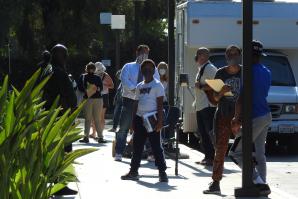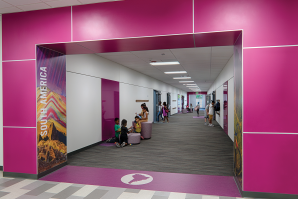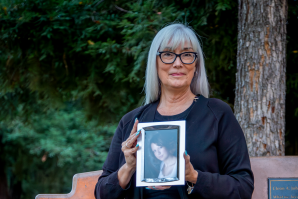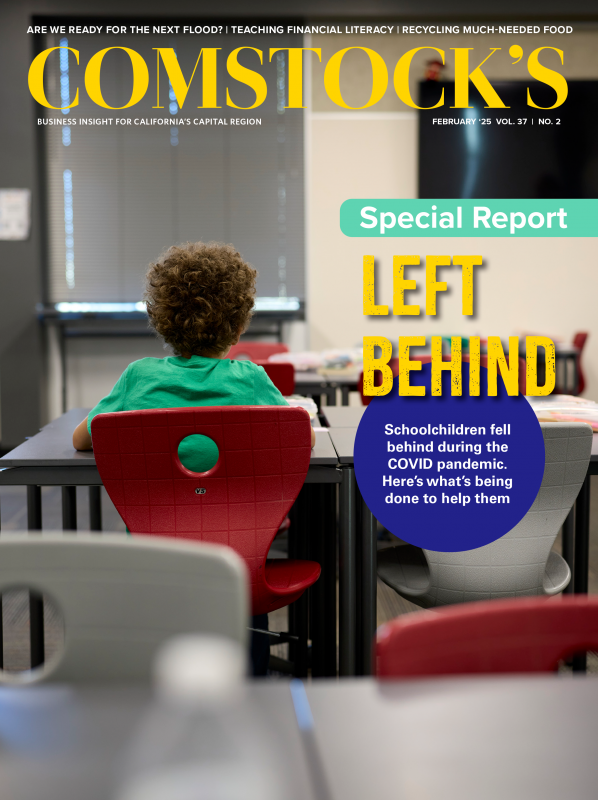This article is part of Comstock’s special report on education.
So many of Joshua Weeks’ lunches are gone these days.
Weeks is a fifth-grade teacher at Sacramento’s Bell Avenue Elementary School, where, like many schools in the region, kids fell behind with the COVID-19 pandemic. While it’s been nearly five years since the first shutdowns, and kids have long since returned to in-person learning, Weeks’ students still bear the impacts of what went down.
Some of his students, who are at a Title 1 school for low-income families, read well below grade level. Some of the kids don’t know the difference between even and odd numbers. So three to four of his 45-minute lunches each week and also after school some days, Weeks does something that he doesn’t get paid extra for but feels obligated to do for his students.
“I know it’s not for everyone, because teachers are working nonstop, all day, every day, but I feel if you’re not tutoring, they’re never going to get exactly where they need to be,” says Weeks, a 2025 Sacramento County Teacher of the Year. “Just because they need so much right now.”
Joshua Weeks, a Sacramento County Teacher of the Year, uses his
lunch breaks at Bell Avenue Elementary School to help tutor his
struggling students.

It’s not just in Sacramento, either. Statewide, while 51.1 percent of students were reading at grade level in the 2018-19 school year, 47 percent were doing so in 2023-24. Math scores have also dropped in California, from 39.7 percent of students meeting standards in 2018-19 to 35.5 percent of students doing so in 2023-24. There have been national drops as well in reading and math test scores compared to before the pandemic.
Around the Capital Region, schools are still working to recover socially and academically from the COVID-19 pandemic. Test scores have been affected, as has school attendance. A new wave of behavioral issues has unfolded, too. Now, a variety of people are working to help students catch up.
Going remote
A week or two into teaching remotely, Marc Vankeuren began to wonder how much he was connecting with students.
It was the spring of 2020, when all around the Sacramento Region, teachers, schools and districts were scrambling to determine what to do when in-person instruction became infeasible. At Sacramento’s Grant Union High School, where Vankeuren teaches science, students weren’t forced to have their cameras on during remote class. The thinking had been that it might be unfair to force a student to show classmates their living situation.
“You’re running a discussion, but everybody else’s camera’s off, so you’re sort of talking as a teacher to a black screen, and the only engagement you get are the students … typing into the chat box in Zoom — which, as you can imagine, over time kind of started ticking down and down,” says Vankeuren, another 2025 Sacramento County Teacher of the Year. “And suddenly, you kind of felt like there (were) three students in the class who you were actually engaged with.”
Just before the pandemic began, music teacher Jennifer Aldridge at Warren T. Eich Middle School in Roseville had returned from watching her students play a concert at Disneyland. Aldridge went from rehearsing with her students live and in-person five days a week to never playing live with them again during lockdown, due to audio delays associated with remote teaching.
“It felt like karaoke-style teaching,” says Aldridge, a 2024 Placer County Teacher of the Year. “Like, I’ll play a recording, and you kind of play along with it. And I had no way to really assess what was going on on their end.”
Eden Getahun, who was a junior at McClatchy High School in Sacramento when the first shutdowns began in 2020, remembers feeling bad for her teachers. “Watching them really trying their hardest to get us engaged, and sometimes not getting the best response from the classes was just — it was honestly kind of sad,” says Getahun, who would go on to graduate high school with an approximate 4.3 GPA and is now a senior at Harvard.
It would be one thing if the school shutdowns lasted just a few months in the spring of 2020. But many schools in the region didn’t immediately return to in-person instruction in the 2020-21 school year, with state guidelines around permissible in-person gatherings and safety concerns keeping some kids out of class longer than others.
In Sacramento County, where there were more than 182,000 COVID-19 cases and 2,604 deaths from 2020 through 2021, some schools stayed remote for most if not the entire 2020-21 school year. Other more outlying areas, where case numbers were lower, brought students back for in-person instruction far sooner, such as Rescue Union School District near El Dorado Hills, which resumed in-person classes, with a hybrid option, in August 2020.
“I know that the school board was resolute at the time, as was the district leadership and our teachers, about the best place for our kids to be is with their teacher. So how do we do that safely?” says Jim Shoemake, who became the district’s superintendent in July 2021. A Sacramento Bee photo taken at the time in-person classes resumed at Rescue Elementary showed plexiglass installed between quads of desks.
Aaron Palm is principal of Oak Ridge High School in El Dorado Hills, which also gave students the option to return to in-person class early in the 2020-21 school year. “We really discovered that, for the most part, the average kid struggles to be a full-time learner online,” Palm says. “It just doesn’t work, and it’s not a substitute.”
Even in Sacramento County, some schools resumed offering in-person instruction in 2020. Jesuit High School worked with a parent employed in the medical field to secure rapid COVID tests so students could return to campus if they wished in October 2020. Principal Michael Wood says roughly half the student body initially chose to come back, with the other half staying remote. Wood says students who were at Jesuit in the spring of 2020 suffered little academically. But it was a different story for younger students, with Wood saying Jesuit gets pupils from 75 to 85 middle schools.
“The experience in the normal cycle is going to be disparate,” Wood says. “In the COVID experience, that was even more the case. The students had been out of school for a year or two, or a year and a half. They certainly had some deficits.”
In early 2024, the state agreed to settle a lawsuit by parents promising to dedicate $2 billion or more to make it easier for students to catch up if they’d lost learning because of the pandemic. “Yes, kids did fall behind,” says Linda Darling-Hammond, president of the California State Board of Education. “Generally the youngest kids had the most difficult time keeping up during those years.”
In October, the California Department of Education heralded the latest assessment scores, with State Superintendent Tony Thurmond commending students but also allowing in a written statement that “we still have a ways to go to ensure that every child is supported to build strong academic skills and access a bright future.”
All through her freshman year of high school at Grant, Evelina Cheng went to class remotely, sharing study space in her family’s home with her three younger sisters, which got noisy. While Cheng had enjoyed remote school early in the pandemic, she missed the social aspects of a traditional freshman year, such as making new friends. And she wondered what she was missing academically. “I wasn’t learning much from the environment,” Cheng says.
The impacts on learning
In the early, low-impact days of the pandemic, students had to do little more than show up, with Gov. Gavin Newsom suspending testing for K-12 students by executive order, which cancelled the 2019-20 California Assessment of Student Performance and Progress exams. Testing resumed in most subjects the following school year, showing minor drops in English language arts and a more noticeable decline in math scores. Math scores in California are still not back to pre-pandemic levels.
It’s the same story nationally. The National Assessment of Education Progress has released data since the beginning of the pandemic showing drops in reading and math for fourth and eighth-graders. Among fourth-graders, math scores went from 241 out of a 500-point scale in 2019 to 236 in 2022, while reading scores went from 220 to 217. For eighth-graders, math scores went from 282 to 274 while reading scores went from 263 to 260.
The current difficulties students are experiencing with math can be seen as early as elementary school, where traditionally, children would play with manipulatives, such as shapes and blocks, to learn simple equations. Judy Farina, who retired as a principal from Sacramento’s Matsuyama Elementary School in June 2022, has certainly seen children grappling more than usual with math. “It’s really the basics,” Farina says. “It’s like number sense, knowing what is a 10 … hundreds, thousands, even knowing how to use a number line.”
That’s not to say math is the only area where students are not faring as well. Vincent Masincupp teaches different subjects at McClatchy, including a freshman ethnic studies class. “Everyone is struggling with writing, because writing’s hard,” Masincupp says. “But even with the reading comprehension, the gap in achievement in one classroom is wider than I’ve ever seen it.”
It’s not just been about learning, either, with one of the defining elements of the pandemic perhaps being its impact on mental health.
This has hit students hard, with Masincupp saying they are more sensitive to criticism and that female students in particular have had a harder time speaking in front of class. Tim Griffin, a McClatchy social science teacher, says the number of students he has on individual education plans, or IEPs, for stress, anxiety and depression has skyrocketed.
Jennifer Aldridge, a music teacher at Warren T. Eich Middle
School in Roseville, got innovative and had her students play
concerts outside during the pandemic.

Cell phone and social media use has likely risen as well, as they were how children and teens stayed connected with their peers when the world was remote. There could be changes brewing on each front, with Australia recently banning social media use for people under the age of 16. Palm says he was encouraged by a statement from Newsom in recent months strongly discouraging the use of cell phones on campus. Palm’s seen the pull of both cell phones and social media for students, saying teachers now collect them at the start of class.
Absences also increased during the pandemic, with Policy Analysis for California Education, or PACE, noting chronic absenteeism rates rose from 12 percent in the 2018-19 school year to a high of 30 percent in 2021-22. Even groups that traditionally had very low rates of chronic absenteeism were impacted, such as English learners whose rates for this type of absence “really spiked,” says Xilonin Cruz-Gonzalez, deputy director for advocacy group Californians Together. Darling-Hammond says the chronic absenteeism rate is down to 20 percent. “I think the state has focused on it,” Darling-Hammond says. “We’ve put in a lot of things that can help.”
Sacramento County Superintendent Dave Gordon, who oversees 13 districts and about 145,000 students, says “we got through the pandemic in a way that was, … doing the best we could in a difficult situation.” Coming out of the pandemic, Gordon sees his districts being very focused and responsive on things like mental health and dropping out, which he called crises, along with chronic absenteeism.
At Sequoia Elementary School in Sacramento’s Rosemont neighborhood, principal Cindy Hollander worries. Things like fist fights, previously unheard of at her school, are happening. Social media, she says, has taken over the lives of the sixth graders, and the kids are mean. And they’re part of a broader cohort in a perilous situation. “The fourth, fifth and sixth graders are the most ill-prepared students to have gone through school as far as my 30 years,” Hollander says. “We’re in trouble.”
Going the extra mile
When in-person classes resumed at Warren T. Eich Middle School in the middle of the 2020-21 school year, it came with caveats, such as that music students couldn’t play wind instruments or sing.
Jennifer Aldridge took to having her students play bucket drums and ukuleles. Aldridge would bring her students to the parking lot just before the end of school so that they could play concerts for parents picking up their children. In December 2021, she found out with a week’s notice that her district, Roseville City School District, would allow her to have an indoor concert with a live audience.
“There was no time to plan a theme,” Aldridge says. “It was really like, ‘Okay, here’s the music we have, here’s the level we’re at. We’re just going to go for it.’”
From the earliest days of the pandemic, teachers had to rapidly adjust what they were doing to help their students. Evie Paul, who retired from Wheatland Elementary School in June 2024, found herself grateful she’d attended a technology conference just before the pandemic, where she had learned how to create a Google Classroom. Others in her district had to scramble when the pandemic hit. “Probably the hardest part was everything was just so crash course, everything we did,” Paul says.
Still, devoted teachers found ways to make class fun for students during the pandemic. In one of his science classes at Grant around Halloween, Marc Vankeuren had his students research how fast their favorite monsters could run. The students had to use Google Maps to find the origin and calculate distance over time for velocity. “For me, it was just trying to be as creative as I could in a way that students can research something, apply some math to it, physics-related math, and put that into a project,” Vankeuren says.
Extra support continues in Sacramento-area schools. At Jesuit, twice-a-week office hours known as community period are now mandatory. During this time, students can see teachers in their classrooms. “It’s protected time, so we can’t have practices taking place, no other club meetings,” Wood says. “It is time for students to go in and see their teachers to make up whatever their — whatever those deficits were.”
Joshua Weeks knows the time his extra tutoring for students at Bell Avenue Elementary School consumes. But he also knows what it gets him. “I have my parents that thank me every time I meet with them,” Weeks says. “They know their kids are improving. And then I have – my data shows it. Every year, I can show that I had a kid that was at 18 percent, and then now they’re getting like 60 percent or higher.”
Stockton Unified School District Superintendent Michelle Rodriguez says her most vulnerable students regressed with the pandemic, similar to what was seen statewide. But there’s been progress, with her students scoring all-time highs in math and English language arts this past year.
“We’re just continuing to have a hyper-focus on … instruction and making sure that we’re looking at data and providing comprehensive support to students,” Rodriguez says.
At Saint Mary’s High School in Stockton, students got “a little bit of grace” because of the pandemic, says Jim Brusa, the school’s president. Things could have been worse, though. “We were fortunate,” Brusa says. “We have really good parents and they were all in with us to make sure that the students didn’t suffer as much as they could have.”
Students haven’t fully recovered from the pandemic, not by a long shot. But there are a lot of people who want to help them make the situation something better than it is. And some students have already come a long way.
Evelina Cheng remembers being in fifth period as an eighth-grader and hearing that students would be getting a break from school due to the pandemic. When she finally resumed in-person school her sophomore year at Grant, she felt behind. Cheng began to feel more at ease her junior year, eventually graduating with a GPA of roughly 4.7 and earning The Gates Scholarship, described on its website as a “highly selective, last-dollar scholarship for outstanding, minority, high school seniors from low-income households.” She is now a freshman at Brown University and is interested in becoming a doctor.
Cheng says that for the student population she comes from, many “likely did get negatively impacted by COVID.” Looking back on the pandemic, Cheng says it feels like a blur. All she could ultimately do was try to follow the example that her parents, Hmong immigrants, had set for her and her sisters.
“You just gotta use the things that you’re given and then use them to benefit you and your family,” Cheng says. “So that’s the mindset I had during the pandemic.”
Stay up to date on business in the Capital Region: Subscribe to the Comstock’s newsletter today.
Recommended For You

What the State Is Doing to Help Education
Efforts by California’s government to help students recover from the pandemic go back to its earliest days, with the state investing more than $36 billion to deal with pandemic impacts. The funding has gone to Learning Recovery Emergency Block Grants, expanded teacher recruitment, literacy specialists and much more.

The Pandemic Made Many Parents Get More Involved in Their Children’s Education
“I think what the pandemic really did was just lift the curtain on what was taking place in the classroom and at the administration level for parents to see,” says Justin Caporusso, a Roseville father of four and owner of Caporusso Communications. “A lot of parents saw how much time was spent on classroom management, behavior and really how little time was spent on kind of overall education.”

New Year, New Administration. What Can We Expect?
The Capital Region’s economy in the first half of 2025 should be unspectacular but steady, forecasters say
The apocalyptic tenor of the recent election made it seem disaster was inevitable no matter who won. But at least on the economy, the first half of 2025 should be a sigh of relief, letting most businesses stick to small ball.

Architects Respond to the Growing Population of Minority, Immigrant and Refugee Students With Culturally Sensitive Design
The influx of immigrants and refugees from a multitude of different countries has created an opportunity and a challenge for Capital Region architects to design educational spaces with greater cultural sensitivity that provide a sense of belonging for new students and families.

What’s on the Horizon for California’s Public Lands?
With less funding in the current budget, the management of public lands is likely to change substantially, and this may have massive and unforeseen consequences for Californians.

The Power and Potential of Seaweed
From keeping oceans healthy to being used as an alternative to plastics, researchers believe seaweed has a multitude of uses
Nearly 2,000 miles northwest of Sacramento, Matthew Perkins rode a boat out into the Gulf of Alaska and saw nothing but endless potential for growth. “It’s kind of overwhelming how much opportunity there is,” he says. “You’re on the water, snow-capped mountains in the backdrop, you look down and see this incredible biomass growing. It’s literally the bounty of nature.”

The Life-Saving Organ Trail
How new technology is helping transplant centers send and receive organs from great geographic distances
In 2022, the United States Food and Drug Administration approved the TransMedics Organ Care System, or OCS device. Known as the “heart in a box,” this device uses normothermic perfusion to pump blood through a removed heart and preserve it for longer periods until it can be transplanted into a new person.

AI in Education: Helpful Tool or Sinister Danger?
Most college professors are wary of it, but others embrace it as a learning advantage
All around the world, academic institutions, from the renowned online Khan Academy through to leading research universities, are grappling with the extraordinarily rapid rise of artificial intelligence systems capable of generating human-like responses to complex questions.

Speaking Out
Man with ALS is able to ‘speak’ again thanks to neurotechnology from UC Davis
Within minutes, the words he wanted to speak appeared on a monitor and were spoken aloud by a computer in a voice resembling his own using recordings from videos made before his diagnosis. It brought everyone in the room to tears. “On day two of this use by Casey, he was talking to his daughter for the first time in her memory. That was so gratifying,” says UC Davis Neuroprosthetics Lab co-director Sergey Stavisky.

The Rise of Alternative Health and Wellness
Businesses in the Capital Region consider the whole person
The approach of Whole Health, a movement led by the U.S. Department of Veterans Affairs, is “Let me understand who you are as a person. … What matters to you as opposed to what’s the matter with you,” says Dr. Michelle Dossett. “I think eventually it’s going to transform what we do in conventional medicine in this country more broadly.”




